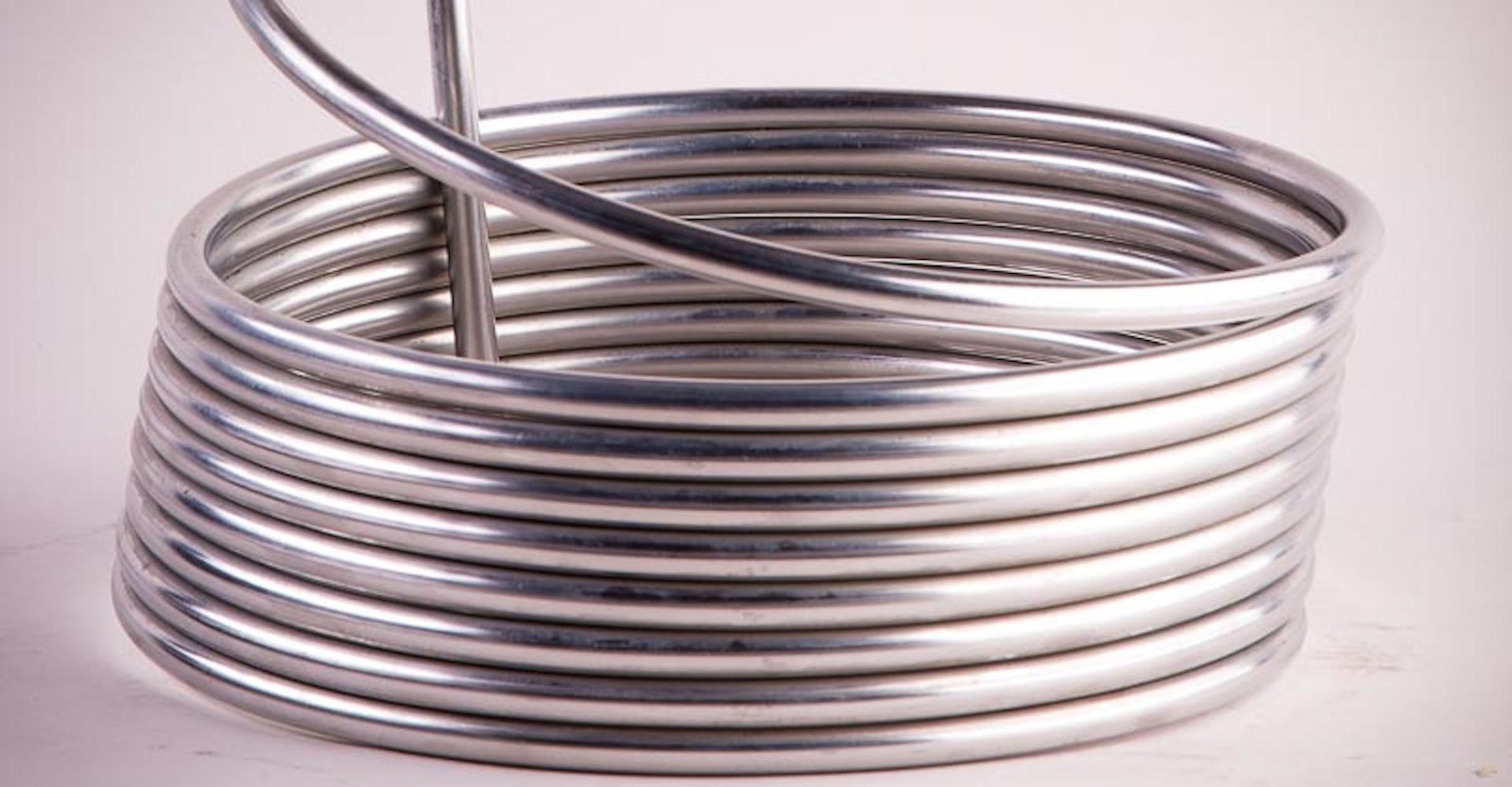It used to be the case that immersion wort chillers were almost universally made of copper. Aside from having excellent heat transfer properties, copper is a relatively soft material, and building your own DIY immersion chiller can be almost as simple as wrapping some refrigeration tubing around a coffee can or corny keg. Copper also used to be inexpensive.
But when the price of copper began its steep climb in the mid-2000s, manufacturers of wort chillers started looking to stainless as a comparatively affordable option. While copper prices may never return to pre-2005 levels, the metal is currently about 40 percent less expensive than it was 5 years ago. Nonetheless, the stainless steel immersion chiller has stuck around, and now choosing one over the other is largely a matter of personal preference.
Appearance
There will always be a part of me that prefers the look of the old-fashioned copper kettles that used to be synonymous with brewing beer. But with time, copper can develop verdigris, that greenish Statue-of-Liberty colored patina. It’s readily cleaned with a good dunk in vinegar and perhaps a bit of elbow grease, but copper does take just a bit more effort to maintain than stainless. So, if you prefer a classic look, go with copper. If you don’t want to think about it, stainless steel may be a better option.
Durability
There’s little difference between copper and stainless when it comes to durability. Yes, copper is softer, but if your wort chiller is coming up against the kinds of forces that can bend copper tubing, you may want to re-evaluate how you conduct your brew day.
Workability
The flip side of the durability coin, however, is that copper is much easier to bend than stainless. So, if you’d rather build your own chiller than purchase one from a supplier, copper is likely to be your material of choice.
Heat Transfer
Copper is an excellent thermal conductor, about twenty times as conductive as stainless steel. But heat transfer isn’t just about conductivity: It’s also about geometry, and the walls of an immersion wort chiller are so thin that the difference in performance shouldn’t make or break your decision. You might save a couple of minutes by selecting a copper chiller (especially when you’re trying to get those final few degrees), but the temperature of your cooling water is a much more important variable.
Of course, if you really can’t make up your mind, and you have the cash, get one of each and chill with the one you end up preferring. Then submerge the other one in an ice bath to serve as a pre-chiller for the water that ultimately flows into your immersion chiller, a great alternative to the pond pump approach for summertime wort chilling.

